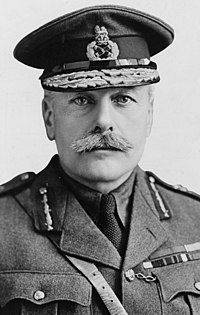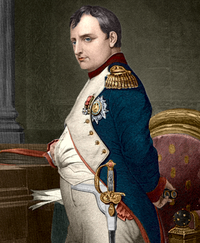I år kommer första världskriget att uppmärksammas runt om
i världen. I samband med det vill jag presentera en tabell som visar världskrigets
förluster hos brittiska armén. Uppgifterna är inhämtade ur boken ”Legendariska
fältherrar” där den brittiske marskalken Douglas Haig tas upp. Han var den
brittiske överbefälhavaren på västfronten under hela kriget. Efter kriget kom
han att bli kritiserad för sina ageranden och förknippas med den stora slakten
på västfronten.
Innan första världskriget ansågs det allmänt bland arméerna
att krigets utgång i många fall vilade på fältherrens ledarskapsförmåga. Inte
minst var det Napoleon som var förebild för många av samtidens militärer. Men första
världskriget kom istället att handla om statens förmåga att samordna resurser för
att hantera de krigsansträngningarna som ökade i takt med kriget. Massproduktion
organiserades för att få fram vapen, ammunition, mat, mediciner med mera. De
europeiska arméerna som drog ut i kriget sommaren 1914 var ursprungligen
förberedda på ett snabbt krig som skulle pågå under 6-8 veckor. På det sättet
kom kriget som traditionellt skulle ledas av militärerna istället ledas av
politiker och den civila statsapparaten i flertalet krigförande länder som Storbritannien.
During this year the World
War I is going to be commemorated around the world. Because of that I am
presenting the following table which is showing loses in the British army during
the war. Marshal Haig was the british commander in chief on the western front
during the whole war. After the war he was highly criticized for his actions
and he was associated with the “mass butchering” on the western front.
Before the WWI it was
generally considered among the armies that result of the war was depended on
the leadership skills of the commander. For many officers figures as Napoleon were
seen as ideals for a general. However the WWI turned instead out to be based on
the ability of the state to coordinate its resources in order to tackle down
the great needs for further war engagement. Mass production was organized in
order to produce weapons, ammunition, food, medicines etc. The European armies
that marched out to the war in the summer 1914 where prepared for a fast war
that would take around 6-8 weeks. But that way the traditional war making which
was commanded by the military was instead overtaken by politicians and the government
machine in many belligerent countries as Great Britain.
Napoloen och hans förluster / and his loses 1800-1813
Slag / Battle
|
Datum / Date
|
Antal dagar / Number
of days
|
Förluster / Loses
|
Per dag / day
|
Marengo 1800
|
14/6
|
1
|
7 000
|
7 000
|
Austerlitz 1805
|
2/12
|
1
|
9 000
|
9 000
|
Eylau 1807
|
8/2
|
1
|
20 000
|
20 000
|
Borodino 1812
|
7/9
|
1
|
30 000
|
30 000
|
Leipzig 1813
|
16-19/10
|
4
|
73 000
|
18 250
|
Haig och hans
förluster / and his loses 1914-1918
Somme 1916
|
1/7-18/11
|
141
|
415 000
|
2950
|
Arras 1917
|
9/4-17/5
|
39
|
159 000
|
4070
|
Ypres 1917
|
31/7-2/11
|
105
|
244 000
|
2121
|
Picardy, Lys 1918
|
21/3-30/4
|
41
|
240 000
|
5848
|
Sista offensiven /
Last offensive 1918
|
8/8-11/11
|
96
|
350 000
|
3645
|



Inga kommentarer:
Skicka en kommentar